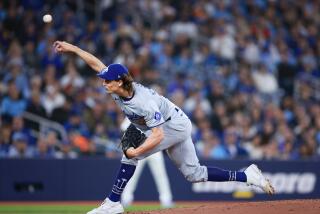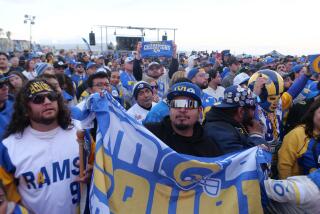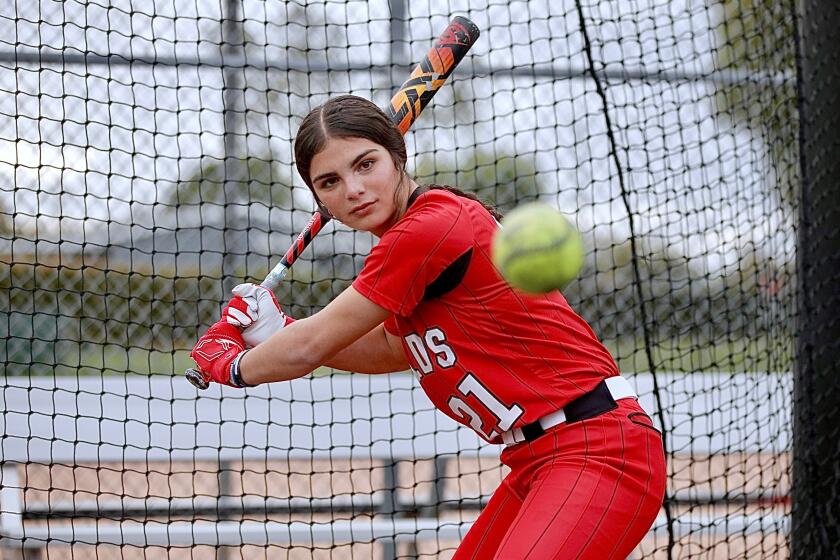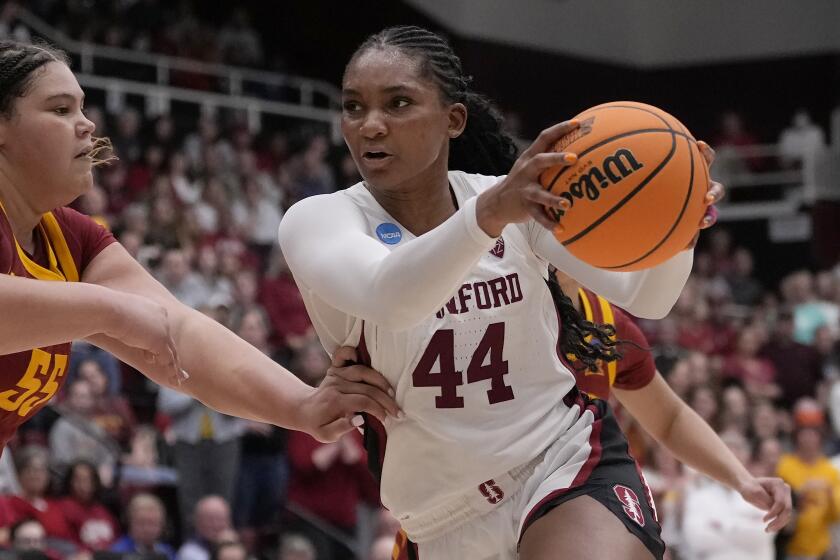Rory McIlroy could be golf’s next superstar, without the baggage
Sunday at the U.S. Open was a day devoid of drama and dripping with adoration.
The prodigy from Northern Ireland, the 22-year-old with the curly hair and the charming manner, had faced down the demons of failures past and conquered the golf tournament most demonizing of all.
Rory McIlroy had done it. The $1.44-million first prize was nice. So were records he established by shooting 65-66-68-69 for a 16-under-par 268, the lowest 72-hole total in the history of this event. Or the 17 under par that he twice reached, lower than any other player before him at any point in the previous 110 U.S. Opens, when he made a birdie after narrowly missing a hole in one on the scary 10th hole and another birdie on No. 16.
What was really nice was that golf had a new, and needed, hero.
His close friend and predecessor to this U.S. Open podium last year at Pebble Beach, Graeme McDowell, said Sunday what many people have been thinking.
“Maybe golf is ready for the next superstar,” McDowell said. “Maybe he is it.”
Even Jack Nicklaus, whose 18 major titles set the bar by which all others are measured, chimed in.
“I like his moxie,” he said.
Golf seems happy that with McIlroy, it doesn’t have to worry about a dark side, unlike the current shaky incumbent in the big dressing room with the big star on the door.
The massive gallery that followed McIlroy at historic Congressional Country Club seemed to like everything it saw. He gave the fans four birdies, including a near-mystical moment on No. 10, when his tee shot over the water and to the narrow green hit 15 feet behind the pin, paused for a moment and then rolled slowly toward the pin, picking up speed and turning toward the cup.
Thousands of fans were close enough to watch in amazement as the ball crept closer and closer. They were crowded around the green, packed in bleachers and on hills across the way near No. 18, and hanging from the balconies of the huge clubhouse to the golfers’ left. The ball stopped inches from the cup. Had it gone in, it would have added further flavor to what was already a fairy tale.
That birdie left him at 17 under for the first time, and nothing was going to stop him.
He stood in the middle of the 18th fairway about 7:15 p.m. Eastern time, just in time for television to get its precious prime-time audience ratings, achieved by delaying tee times to much later in the day than needed. Bob Costas was standing nearby, so this had to be huge.
There were people 20 deep at the ropes, more packed in bleachers 50 rows high, even more on hills across the water behind the 18th green. In the distance, hundreds still hung from the clubhouse balconies.
The weather forecast had called for showers late in the day. But nothing was going to rain on this parade. There was not a wisp of wind, not a movement in the huge trees that surrounded the scene. The golf course was breathless, and so was the sports world.
McIlroy hit his second shot just short of the green, leaving himself a gentle downhill pitch to a reasonable back-left pin placement. Sunday’s U.S. Golf Assn. course setup, legendary for its extreme difficulties, seemed docile at Congressional. Perhaps the USGA, like the other players, had seen McIlroy through 54 holes and just given up.
While the scene swirled around him, McIlroy looked for his father, spotted him in the bright green shirt before he rolled his lag putt to tap-in range, and got to him quickly when it was over with a hug and a “Happy Father’s Day.”
He had not only done it with flair, but with machine-like efficiency. He made the four-day march like a man pushing a lawn mower. No blade was left untouched. Row by row, step by step, he covered it all. It was thorough, methodical, precise.
A U.S. Open golf course is meant to intimidate and destroy. McIlroy hit 62 of the 72 greens in regulation. Another record.
When McDowell won last year at Pebble Beach, it was a major victory. There is the expectation of a couple more for him. Maybe.
Same with Louie Oosthuizen after last year’s British, Martin Kaymer after the PGA Championship, and Charl Schwartzel after the Masters.
With McIlroy, the ceiling is much higher. He has contended three times in majors before this. He showed he can learn and avoid implosion. He has been a known commodity, especially in Europe, for a long time. He turned pro at 17, made the cut in his first tournament and finished third in his next one. At age 2, he could hit a driver 40 yards. At age 4, he worked on his chipping by consistently knocking plastic balls into his mother’s washing machine.
Now he is the pride of the Belfast suburb where he grew up and learned to play, where his father worked as a bartender at the local golf club and his mother worked in a factory — and, when his golf skills made him a bit too big for his britches, famously told him to “get over yourself.”
An Irish reporter told McIlroy in his news conference Sunday that the bar was still open in the middle of the night back home at his country club. McElroy grinned and said, “I bet it’s all going on my tab.”
Oh yes, the name of that Belfast suburb? It could not be more fitting.
We now have a new star from Holywood.
More to Read
Get our high school sports newsletter
Prep Rally is devoted to the SoCal high school sports experience, bringing you scores, stories and a behind-the-scenes look at what makes prep sports so popular.
You may occasionally receive promotional content from the Los Angeles Times.







